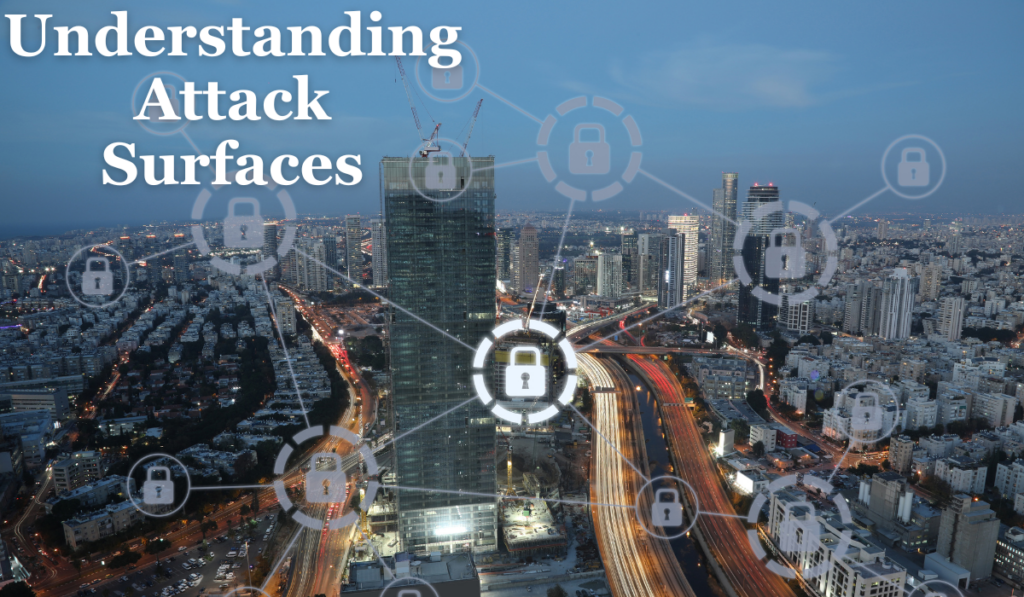
A fundamental concept in cybercrime is the understanding of attack surfaces. Attack surfaces encompass the potential avenues that cybercriminals can exploit to compromise digital assets.
What Are Attack Surfaces?
Digital Attack Surfaces:
Digital attack surfaces refer to the various points through which cybercriminals can infiltrate a computer system, network, or application. These may include software vulnerabilities, weak passwords, unsecured network connections, etc. Understanding the setup and managing these digital entry points are crucial for maintaining a robust cybersecurity posture.
Physical Attack Surfaces:
On the other hand, physical attack surfaces involve the tangible aspects of an organization’s infrastructure. This includes physical access points such as doors, windows, and servers. While digital attack surfaces focus on virtual vulnerabilities, physical attack surfaces deal with real-world entry points that could be exploited by malicious actors.
Key Differences
Nature:
- Digital Attack Surfaces: Virtual and software-related vulnerabilities.
- Physical Attack Surfaces: Tangible and infrastructure-related vulnerabilities.
Exploitation Techniques:
- Digital Attack Surfaces: Exploited through malware, phishing, and other cyber threats.
- Physical Attack Surfaces: Exploited through unauthorized access, theft, or damage to physical assets.
Visibility:
- Digital Attack Surfaces: Often invisible and require specialized tools for identification.
- Physical Attack Surfaces: Visible and can be physically inspected.
Protecting Against Cyber Threats
Digital Attack Surfaces
Keep Software Updated:
Regularly update your operating systems, applications, and antivirus software to patch known vulnerabilities.
Strong Authentication:
Enforce strong password policies, implement multi-factor authentication, and use biometric authentication where possible.
Network Security:
Secure your network with firewalls, intrusion detection systems, and encryption to protect against unauthorized access.
Employee Training:
Educate employees about cybersecurity best practices, including how to identify phishing attempts and other social engineering tactics.
Physical Attack Surfaces
Access Controls:
Implement access control measures such as key card systems, biometric scanners, and surveillance cameras to restrict physical access.
Secure Infrastructure:
Ensure that physical infrastructure, such as servers and networking equipment, is housed in secure locations with controlled access.
Employee Awareness:
Train employees to be vigilant about physical security, reporting any suspicious activity or individuals.
Environmental Controls:
Implement environmental controls like fire suppression systems and climate control to safeguard physical assets.
Understanding and managing attack surfaces are pivotal components of a comprehensive cybersecurity strategy. Regular assessments, robust security measures, and employee education form the pillars of a resilient defense against cybercrime.
The post Understanding Attack Surfaces appeared first on Breach Secure Now!.




